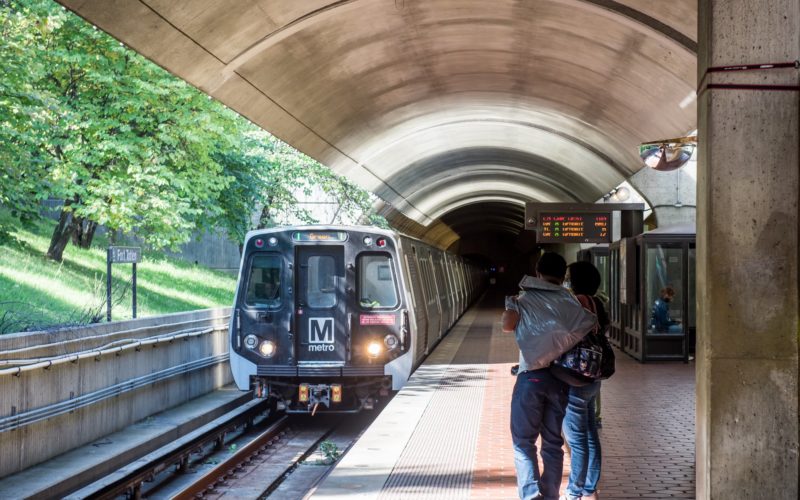
Congress recently ended a longstanding imbalance in the federal tax code that favored car commuting over transit. The commuter benefits scheme had allowed workers to set aside up to $250 a month in pretax salary toward the cost of parking at work, but only $130 a month for public transportation and vanpooling. But equalization of parking and transit tax benefits at $255 per month was included in the new U.S. transportation funding authorization enacted in December 2015.
In TransitCenter’s 2014 report Subsidizing Congestion, we found that the parking benefit reduces federal, state and local revenue by $7 billion a year, and worsens traffic in urban downtowns by adding over 800,000 daily car trips to U.S. roads. The smaller transit benefit was insufficient to balance out or reverse this transportation impact.
Could the increase in the transit benefit reduce this problem? We updated one of our analyses to find out. We project that the expanded transit benefit will help cities and suburb-to-city transit commuters – but still won’t counteract the big pro-driving incentive created by the parking subsidy.
We simulated the impact of parking and transit benefits on five commute markets. In every case, the net effect of the parking and transit benefits together was more driving than in a world with no commuter tax benefits at all.
One problem is that the increased transit benefit only further discounts more expensive fares — those over $130/month, which are typically commuter rail monthly tickets, rather than in-city subway/bus passes. Another issue is that the transit benefit doesn’t reach enough people – it is employer-administered, and the feds don’t require companies to offer it. A 2013 survey found that only about 12% of employers offer the transit benefit, and only 2% of American workers take advantage of it. In contrast 87% of workplaces provided free on-site parking, with 11% providing monetary parking subsidies.
The analysis strongly underscores how much the parking subsidy strains urban highways and city streets. For all five of the markets we simulated, the higher transit benefit fails to counteract the effects of the parking subsidy.
Cue the mayors
The FAST Act is a five-year authorization. Focusing Congress’ attention on the parking subsidy again soon will be a tall order. Action to structure incentives to promote sensible and sustainable urban transportation is now best sought at the local level.
In the past six months alone, several cities began tackling related issues. Chicago; Hartford, Conn.; and Washington, DC have substantially reduced parking requirements near transit hubs. Oakland plans to embrace dynamic pricing for on-street parking – using technology to raise the price on blocks where parking is full and lowering it on those with spaces to spare. And Boston Mayor Marty Walsh has floated the idea as well. In Cambridge, large developments must commit to reducing drive-alone rates, monitor parking usage, and incorporate incentives like bicycle parking, carpool matching, and employer shuttles.
Also this year, laws took effect in Washington, DC and New York City requiring many more employers to offer the federal transit benefit. San Francisco has had such a law for several years. New York’s Riders Alliance estimates the NYC law will expand access to the benefit to over 600,000 workers.
 On the Brink: Will WMATA’s Progress Be Erased by 2024?
On the Brink: Will WMATA’s Progress Be Erased by 2024?
The experience of being a WMATA rider has substantially improved over the last 18 months, thanks to changes the agency has made like adding off-peak service and simplifying fares. Things are about to get even better with the launch of all-door boarding later this fall, overnight bus service on some lines starting in December, and an ambitious plan to redesign the Metrobus network. But all of this could go away by July 1, 2024.
Read More What’s Going on With Transit Service at the Seven Highest Ridership U.S. Cities? DC Edition
What’s Going on With Transit Service at the Seven Highest Ridership U.S. Cities? DC Edition
Mechanical problems with the 7000-series train cars and lapsed rail operator certifications have caused rail service levels on WMATA to plummet, but the agency is running 100% of pre-pandemic bus service.
Read More